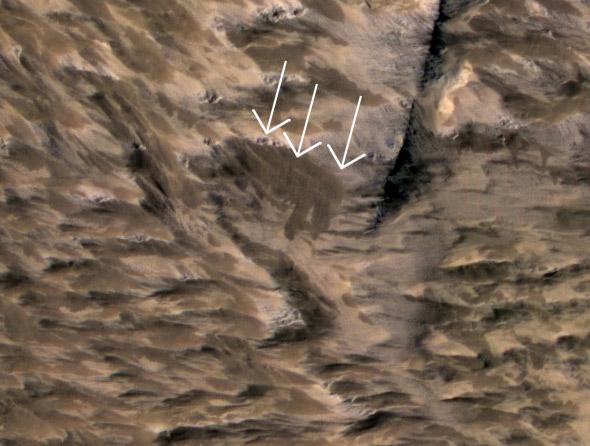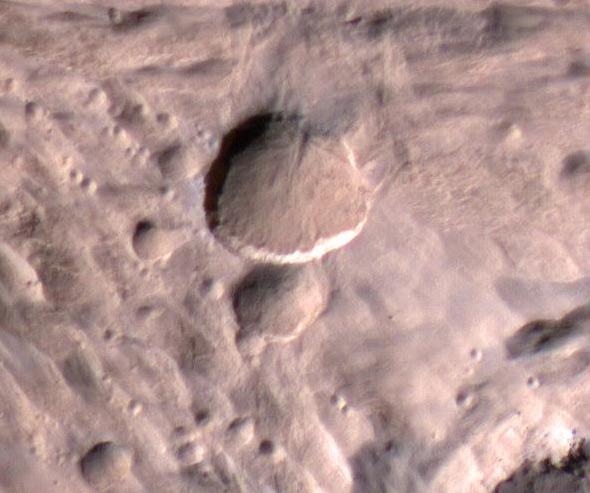Here’s your “holy frak!” moment for today: the Mars Reconnaissance Orbiter took an image of a 50-meter wide crater on the Red Planet on March 28, 2012 … but the crater wasn’t there in an image taken on March 27!
In other words, this crater was spotted less than a day after the impact that formed it!
JPL put together a video explaining the particulars:
Holy frak! (Like I said.) That’s amazing. We’ve seen evidence of fresh craters on Mars before, but usually the impact can’t be nailed down to better than a few years’ time. In this case, though, the constant sweep of the Mars weather camera (called the Mars Color Imager, or MARCI—my sister’s name!) picked up the black smudge that is a telltale sign of a fresh impact. Because the imager is low-resolution, it sees a large area of the surface, and does so all the time. That’s what allowed the impact date to be determined so well.
It’s also the largest crater in the solar system ever seen with before and after shots. At 50 meters or so across, it’s half the length of a football field, so the impacting object was probably up to a few meters across. Something that small would burn up in Earth’s atmosphere, but Mars has a much thinner atmosphere, about 1 percent as thick of Earth’s, so it can’t stop rocks that size. They make it to the ground, hitting hard enough to carve out a hole and blast out ejecta debris—which was how the crater was found.

Photo by NASA/JPL-Caltech/MSSS
But the air there is thick enough to cause a lot of pressure in front of the incoming meteoroid, which can break it up into smaller pieces. There was one big crater, one smaller one, and quite a few even smaller ones around the main one; these may have been from pieces of the meteoroid that broke up as it came in.
Not only that, but they found landslides in the area that occurred around the same time, so they may have been caused by the seismic ground wave from the impact as well.

Photo by NASA/JPL-Caltech/Univ. of Arizona
Events like this are very cool, but also very useful. They help scientists understand how impacts have shaped the Martian landscape, they help determine the number of small impacts suffered by Mars (and by extrapolation, Earth), and in some cases reveal what’s underneath the surface of the planet (including ice). That last one is a gift; most craters are very old, and the atmosphere (and subsequent impacts) have eroded them, but in this case we get very fresh results.
Congrats to scientist Bruce Cantor, who spotted the crater, and to the whole team running MRO. They keep delivering the surprises, and that’s a pretty big part of what makes science fun.
